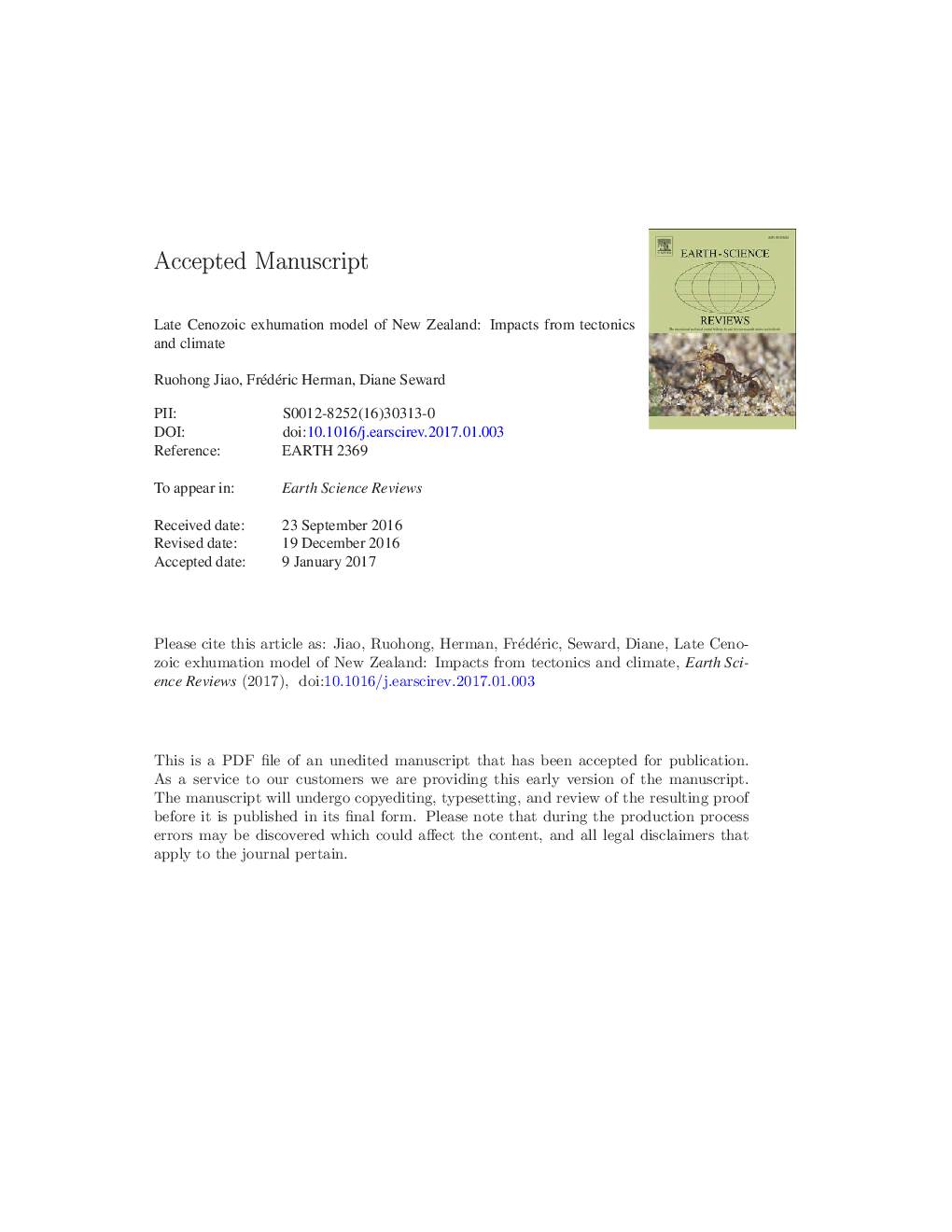| Article ID | Journal | Published Year | Pages | File Type |
|---|---|---|---|---|
| 5785166 | Earth-Science Reviews | 2017 | 54 Pages |
Abstract
Late Cenozoic convergence between the Australian and Pacific Plates has led to extensive crustal deformation and exhumation in New Zealand. Over the past five decades, the convergence-associated exhumation history of the Palaeozoic-Mesozoic New Zealand basement has been studied using various thermochronometric techniques. Here we compile 992 published ages and invert them to estimate the temporal and spatial variation in exhumation rates since 25Â Ma, which we then interpret with a plate tectonic reconstruction model. The results reveal widespread increases in the exhumation rates at ~Â 6-4Â Ma, a time correlated with accelerations in the relative plate motion. The absolute increases in exhumation rates are however, not uniformly distributed over New Zealand. Since the Plio-Pleistocene, the inferred models suggest variable response of exhumation to global cooling. In the non-glaciated eastern North Island (the Hikurangi subduction margin), the million-year average exhumation rates have remained relatively low (<Â 0.5Â km/Myr). The highest exhumation rates (>Â 5Â km/Myr) have been observed in the collision zone of the central Southern Alps of South Island, where both tectonic deformation and precipitation rates are highest. In Fiordland (the Puysegur subduction margin), despite the weak crustal deformation the exhumation rates have been high (0.5-3Â km/Myr), which we suggest is due to intensified glacial erosion. Our findings highlight the determining role of tectonics in setting up the regional exhumation pattern, but both strong tectonic deformation and efficient erosion are required to maintain rapid exhumation rates. The influence of climate on mountain erosion can only be distinguished in regions under slow to mediate exhumation (<Â 2Â km/Myr).
Related Topics
Physical Sciences and Engineering
Earth and Planetary Sciences
Geology
Authors
Ruohong Jiao, Frédéric Herman, Diane Seward,
